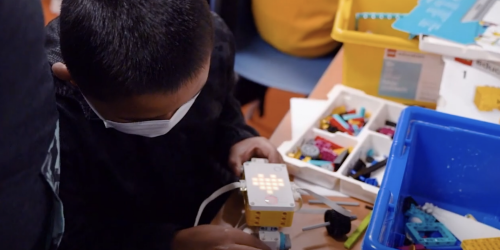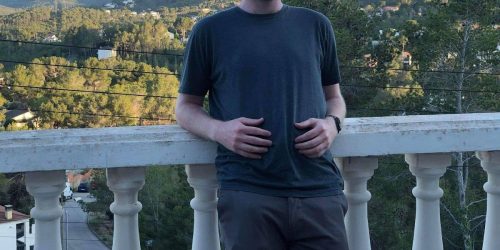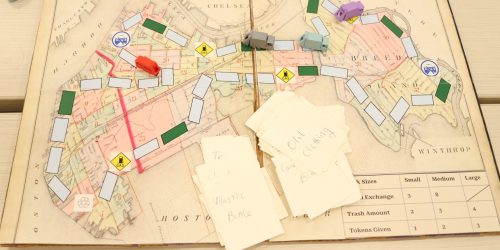By Dipeshwor Man Shrestha, Masters Student in STEM Education
Every year the Tufts Center for Engineering Education and Outreach (CEEO) employs 25-30 college and high-school student interns to work on engineering, design, and research projects. COVID-19 forced us to redesign our in-person internship program, finding ways to simulate activities like tinkering, design reviews, brainstorming and trouble shooting sessions, and coordinating the simultaneous and overlapping project development of more than 30 people and multiple strands of research and design.
We soon realized that in addition to adversities that the pandemic has brought forth, it has also highlighted new opportunities and affordances that only virtual tools and environments can offer. We have seen collaborators from different countries and different time zones work together to create a CAD model, we have noticed a night owl and an early bird working asynchronously to complete a common task, and we have observed excitement in kids from Nepal as they controlled a robot halfway around the world in the US, remotely.
Typical CEEO internship experience
In the past, the interns would typically work on hands-on projects, build prototypes, test their designs, and showcase their progress at the end of the summer internship program. Everyone would work together at Tufts CEEO office space from 9 am to 5 pm. They would share a common workspace, sit together, eat together, hack together, play frisbee together, and report to the faculty team leads 2-3 times a week. Playing frisbee, having lunch together, joking around, and getting to know each other through small talks and hallway conversations provided plentiful opportunities for everyone to get to gel with the team and foster a sense of belonging to the CEEO community.
Summer 2020 experience
This year’s summer internship program was completely remote/virtual. We had 38 interns – 5 high school students and 33 Tufts students, undergraduates as well as recent graduates who were managed by 16 team leads – Tufts faculty members, graduate students and postdocs. The students worked on 10 different research strands. Although some of the elements of the in-person experience were missing this year, we leveraged past experiences and tried to recreate events and activities that had worked well in the previous years.

Figure 1. An overview of summer 2020 internship at Tufts CEEO
We attempted to recreate the in-person summer internship experience, with three main goals:
1) To recreate the in-person summer internship experience for Tufts CEEO interns virtually,
2) To explore how we can get people to help each other, and
3) To develop a sense of community in a remote/virtual setting.
Tools & Applications
Keeping the three goals in mind, we decided to implement the following tools:
| Tools | Description | Rating based on our experience |
| Zoom | a video conferencing software | Excellent |
| Slack | a collaboration hub and messaging platform | Excellent |
| Miro | an online collaborative platform that enables teams to brainstorm ideas and manage agile workflows | Excellent |
| Gather.town | a video conferencing platform that enables gatherings in virtual spaces | Good |
| Sococo | an online workplace that simulates elements of a physical workspace | Poor |
| Asana | a task management tool that helps teams organize, track, and manage their work | Poor |
| G Suite applications | a suite of cloud computing, productivity and collaboration tools, software and products developed by Google | Excellent |

Figure 2. Tools we experimented with this summer.
Each week we experimented with the aforementioned tools and platforms to design activities to simulate aspects of the in-person summer internship experience to recreate a similar experience for the new interns working remotely/virtually. For example, to start building the community, we asked the interns to virtually introduce themselves on Miro by asking each individual to post a picture and answer a few questions about themselves. We noticed that this simple act of participating in a common activity developed a sense of familiarity amongst the team members even before the interns were assigned to their respective projects. Likewise, to encourage collaboration among interns working in different teams, we created a virtual CEEO workspace on Gather.town which allowed the interns to hang out in the virtual space and have informal conversations with their peers – something which was very common in the in-person internship experience in the previous years and was possible because of the tool’s feature that simulated a real world conversation scenario.
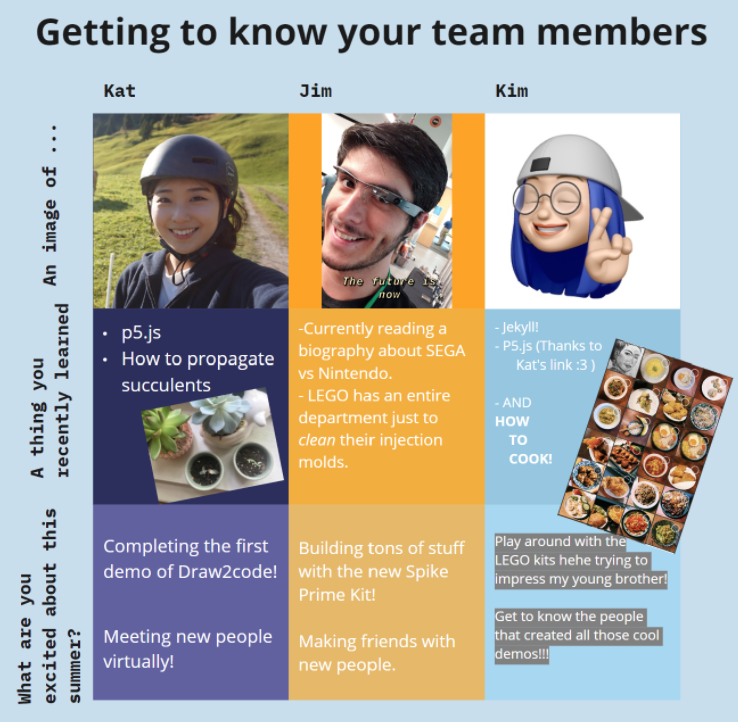
Figure 3: An example of virtual introductions on Miro

Figure 4: Virtual CEEO workspace created on Gather.town
We took into consideration the interns’ feedback as we refined our design for the following week. For example, in the third week of the internship, some of the interns mentioned that they knew what their team members were working on but they did not have any idea about what other teams were working on. So to address this issue and encourage cross team collaborations, we introduced a new structure for each team to post a 3 minute video about their project on a dedicated Slack channel and for the other teams to offer feedback on their work and to share ideas about possible collaborations.
Events & Activities
Here’s a table of various events and activities we aimed to recreate at the start of the summer internship program, implementing the various tools.
| In-person activities | Virtual/Remote activities | Expectations |
| Friday Frisbees | Virtual CEEO Fun time | – Having fun- Getting to know each other in an informal setting |
| Physical builds | Ship materials | – Testing activities that required a similar setup |
| 9 am Stand-up meetings | Zoom meetings, Asana | – Sharing daily updates- Keeping track of your work |
| Hackathons | Virtual Hackathons | – Testing and receiving feedback on your projects- Documenting your work |
| Guest Speaker Series | Zoom seminars | – Hearing inspiring stories from guest speakers – Asking questions |
| Orientation | Virtual introductions on Miro, Zoom events | – Getting to know the larger structure of the CEEO and how the different projects are connected |
| Feedback | Zoom, Miro, Slack, Google Form | – Giving and receiving feedback – Weekly surveys- End of the summer reflections |
| Debugging | Slack messages, Zoom meetings | – Using debugging strategies like pair programming or rubber ducking |
| Final showcase | Virtual showcase | – Presenting your projects to industry funders and your peers |
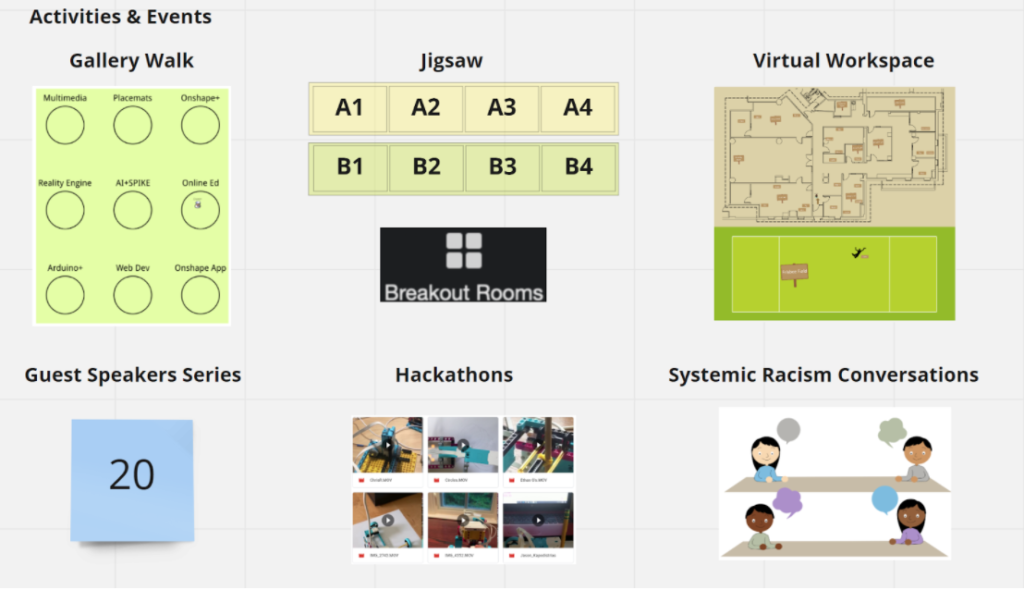
Figure 5. Virtual events and activities we did during the summer
Getting to know each other
Even though we tried to recreate various in-person experiences of the internship program, the most important aspect was getting to know each other and working together as a team. In addition to the events and activities we did together, we had set aside an hour each week for CEEO Funtime where interns and team leads would gather together, play fun games, have informal conversations, and get to know each other outside of a formal work environment. Here’s a table of fun games we played together.
| Games/Activities | Description | Rating based on our experience |
| Drawasaurus | A drawing and guessing game similar to Pictionary | Excellent |
| Drawphone | A drawing and guessing game similar to Telephone | Excellent |
| Codenames | A guessing game based on the Codenames boardgame | Good |
| Informal conversations on Gather.town | A custom map on Gather.town where members switch their seats after a 3 minute timer is up. Great for informal conversations and getting to know new people. | Good |
| 10 minute stretches | A 10 minute physical exercise routine at the start of each Zoom session | Good |
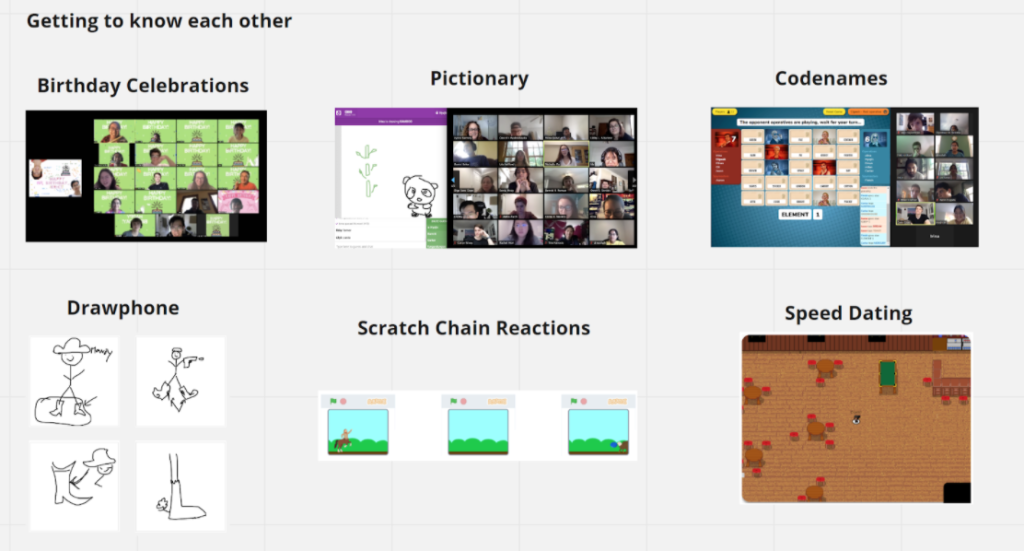
Figure 6. Fun activities we did during the summer
Overall experience
A major compromise we had to make as we redesigned the structure for this year’s internship program was to reduce the number of projects that required physical builds like soldering, circuit design, laser cutting, 3D printing, and breaking apart things and instead focus on coding, simulation, and design aspects. Even though shipping the required materials to the interns provided them opportunities to build physical models, we struggled to fully recreate that experience of being involved in hands-on making and engineering projects.
Besides that, we were able to leverage existing tools and technologies to not just recreate many elements of the in-person experience, but we were also able to come up with creative ways to enhance the virtual internship experience. Overall, it was an exciting summer and a great success!

